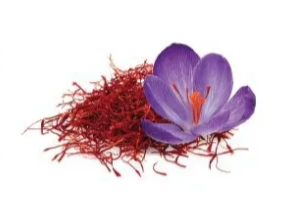Saffron is a spice that comes from the Crocus sativus flower, which is a distant cousin of the lily. Within the flower are the styles and stigma, also known as threads. As a spice, saffron’s flavor is quite flavorful, almost intoxicating, and in demand as a culinary spice. Saffron adds delightful flavors to many dishes, in many cultures and cuisines. It also brings a myriad of health benefits, which factors into its popularity, and its high price.
A laundry list of benefits and health claims are linked to the use of saffron.
Many of these benefits are credited to the high levels of antioxidants in the plant. Three of the main antioxidants in saffron are crocin, picrocrocin, and safranal. Saffron also delivers kaempferol and crocetin.As we all know, antioxidants from many different sources are body-protective, and help us to deal with oxidative stress and free radicals. Saffron is one plant that brings large amounts of very beneficial protective antioxidants to the table.
Health Benefits of Saffron
The antioxidants in saffron may play a role in protecting the body from disorders affecting the nervous system.Saffron may also increase sex drive and sexual function in both males and females. For women, it may help to reduce the symptoms of premenstrual syndrome.Growing evidence suggests that saffron may help to improve mood. Researchers reporting in the Journal of Behavioral and Brain Science found that a saffron extract increased dopamine levels in the brain. And in human and animal studies, saffron and its constituents have been shown to be effective in the treatment of mild to moderate depression.
Using saffron can be as easy as adding a few strands to hot water, then, after it softens and dissolves, adding the liquid to food for a savory flavor addition. It is also gaining popularity as a supplement, as well as a spice.
Once again, an herb-spice that has a long dated history, being learned about as if it were brand new today!










